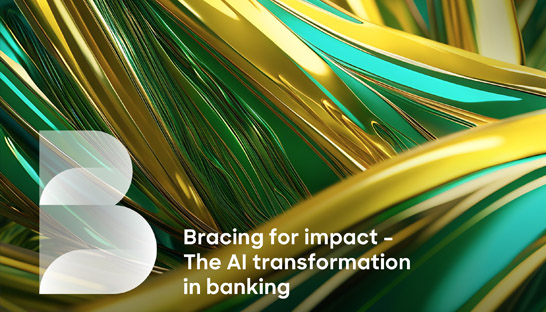
Artificial intelligence could boost revenues in the banking sector by as much as $1 trillion by 2030, according to industry leaders. But with most firms not prioritising digital talent development as part of their AI efforts, it could be easier said than done for many banks to feel that benefit.
Following the abject disappointments of the cryptocurrency, NFT and metaverse bubbles before it, it might not be hard to see why critics are increasingly asking questions of AI’s potential. More than a year into reports declaring the revolutionary technology will disrupt every industry, and provide huge boosts to efficiency and global economic output in the process, the results delivered have failed to live up to that.
This means that in the historically cautious world of banking, not everyone is as enthused about AI as they might be. According to Roland Berger, not all financial institutions are turning to AI at the same speed, with some institutions wary of “hype” around expensive new technologies that might not deliver on their investments. But the strategy consultancy also found that leading banks have embraced AI innovation and moved well ahead of their competitors – and that many of them have already developed and implemented a portfolio of use cases, which suggests that it is not only premature to write the technology off as “over-hyped”, but that it could be costing banks a competitive edge to do so.
Michael Pieper, a partner in Roland Berger’s Frankfurt office, explained, “When a technology is poised to transform an entire industry, you can’t call that hype. The problem is not that banks expect too much of AI: most of them still underestimate the impact it will have on business models.”
According to banking leaders polled by Roland Berger, AI capabilities could unlock $1 trillion in global banking revenue pools by 2030 – while decreasing costs associated with compliance, operations and customer service by as much as 25%. If all that is “underestimation” as Pieper would have it, the firm clearly believes that there is massive potential for AI to transform banking – and quickly. With 49% of banking executives also saying they expect AI to finally impact the sector by the end of 2025, it is clear they expect big things too. The difficulty may just be not knowing where to start.
To that end, Roland Berger also compiled an analysis of where top executives most commonly anticipated AI would impact a bank’s value chain. By far, the most popular response came relating to customer-facing activities – from sales to client services – where 85% thought AI could supercharge their efforts. Meanwhile, in a distant second, 66% both said that compliance and risk management; and IT operations would be boosted.
Getting the most out of AI will also depend on the choices banks make in the implementation of the technology – and their ability to find areas in their organisations where it can make the most impact. To that end, Roland Berger polled banks in AI leadership positions against the industry average, to see which best-practices were driving their early success.
Without exception, AI leaders said they were all in the process of developing AI use cases – compared to an industry average of 74% (an average they likely have pushed up dramatically in that case). At the same time, 71% were deeply invested in developing a robust AI and technology infrastructure.
And AI leaders also seem to have a better grasp of how important human labour will still be to this process. Like a growing body of research before, the strategy firm highlighted the fact 14% of AI leaders in banking are prioritising the sourcing and development of talent as part of their efforts to leverage the technology – compared to just 3% of the wider market. With a continuing war for digital talent being waged, the firms which prioritise the management of human AI talent will likely come out ahead when the technology finally becomes mainstream.






